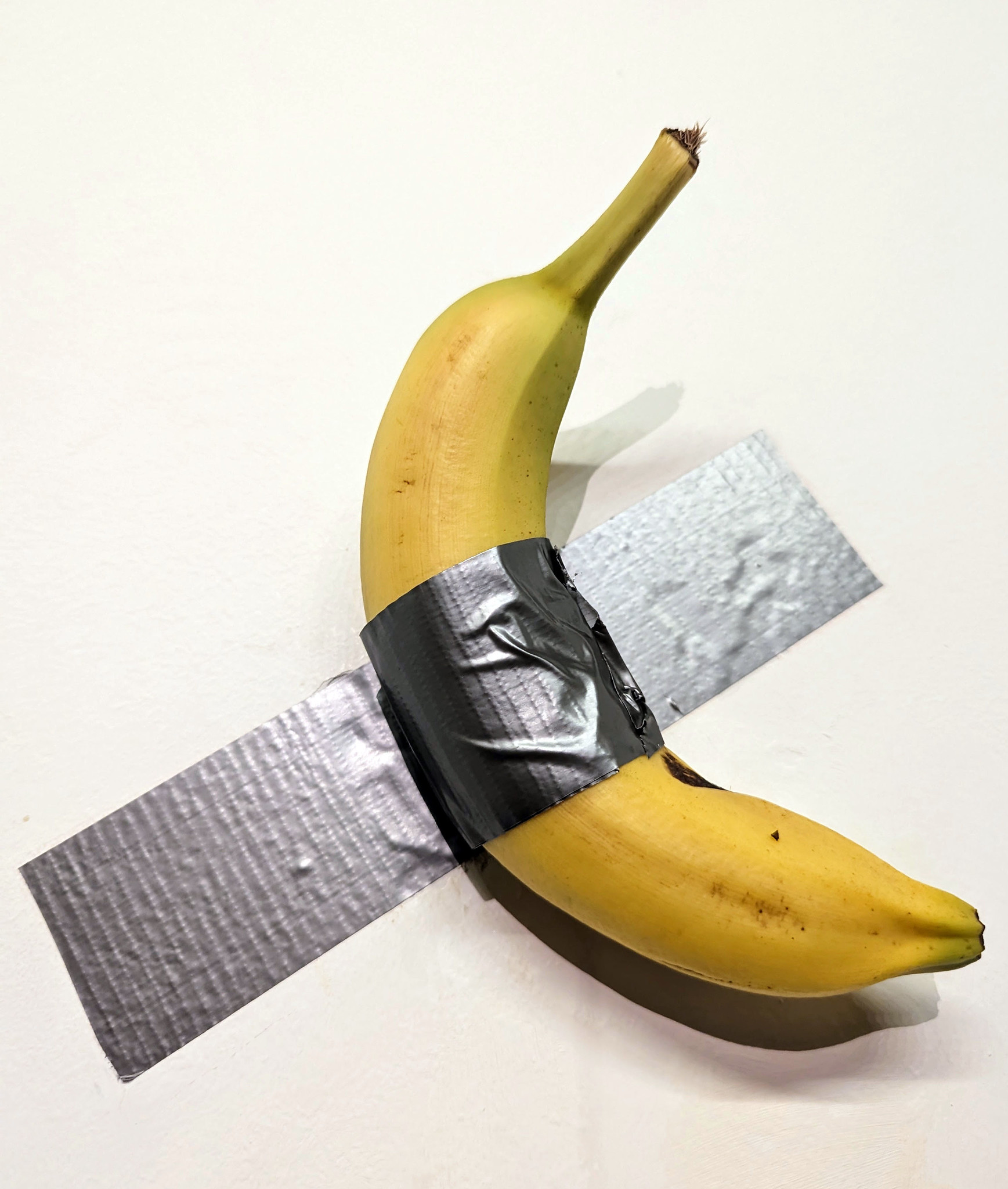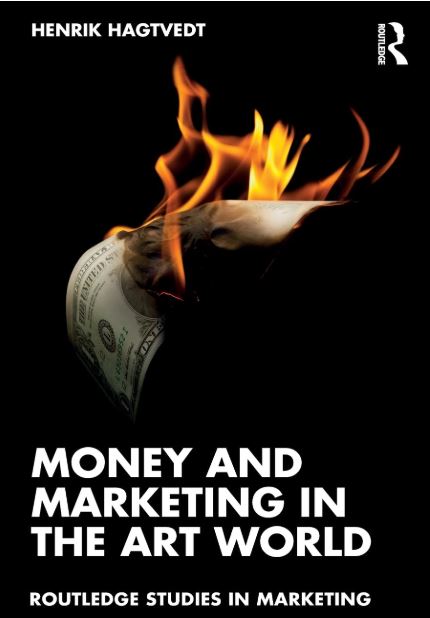
Money, marketing, and art
A banana duct-taped to a wall says a lot about today’s art market, according to Carroll School of Management Associate Professor of Marketing Henrik Hagtvedt, author of the just-released Money and Marketing in the Art World.
Sold at a Sotheby’s auction for an eye-popping sum of $6.5 million, the conceptual work “Comedian,” by Italian artist Maurizio Cattelan, encapsulates the central point Hagtvedt explores in his book: how buyers and those who cater to buyers shape the high-profile art world, relegating the actual artists to a secondary role.

'Comedian,' conceptual art by Maurizio Cattelan, featured a banana duct-taped to a wall.
“There is scant artistry or conceptual creativity involved in duct-taping a banana to the wall, but the price tag demands attention,” Hagtvedt said of the work, which sold in late November. “Masterfully executed artworks are no longer rare enough to create sensations, so creativity, skill, and quality have become largely irrelevant in parts of the art market, whereas the simplest way to make a splash is merely setting a high price for something of conspicuously questionable merit.”
Prior to entering academe, Hagtvedt studied painting at the Academy of Fine Arts in Florence, Italy, worked full time as an artist, and had more than 25 major exhibitions in Europe and Asia. But given what he knows about the art market, he ascribes most of his own past success to good luck.
The initial art-related experiences sparked his interest in marketing and consumer behavior, and today this background still informs his research and areas of expertise. Hagtvedt’s primary research interests are in aesthetics and visual marketing, including topics such as visual art and luxury branding.
A combination of marketplace observations, marketing insights, and research findings revealed the art world is primarily shaped by money and marketing, not by art and artists, said Hagtvedt, who serves as chairman of the Carroll School’s Marketing Department.
“Art is a central aspect of human societies, yet few people know how the art market functions. The most prominent aspects of the art world, including galleries, museums, media attention, and even critical acclaim, are actually shaped by buyers and those who cater to buyers, whereas artists tend to play a secondary role.
“This book illustrates how money and marketing, in combination with general trends, play decisive roles in propelling specific artists and artworks to positions of prominence, thereby also deciding what millions of visitors to galleries and museums will view, year after year.”

Looking at industry branding, promotion, and conspicuous consumption, Hagtvedt focuses on artists, dealers, collectors, and other players in the art market to show how their behaviors shape the landscape of contemporary art.
The book examines the role of general trends, as well as some societal implications of the influence of money and marketing in the art world. Hagtvedt found it interesting that factors that influence most markets don’t hold the same sway in the art market.
“When I began work on this topic, many years ago, I was aware that money and marketing played a larger role than people realized or would like to admit. However, it is arguably surprising that specific marketing influences are so pervasive, whereas other influences that are central in most markets are less relevant in this one.
“In most markets, for instance, product quality is a strong driver of success. In the art market, at least in the contemporary one, it is unclear whether product quality is a relevant concept at all.”
Hagtvedt thinks there’s something in the book for those with a general interest, as well as for artists and art professionals.
“For anyone interested in art, this book demystifies some seemingly esoteric parts of the art world,” Hagtvedt said. “For artists or art professionals, it draws back the curtains and says much about how this world really operates.”
The book also provides critique and guidance for public policy. For instance, he says, public art museums should presumably exhibit the best and most important works of art, but most of these institutions are strongly influenced by private business.
“As it is now, we use taxpayer money to subsidize the interests of influential market players,” Hagvedt argues in the book, “while maintaining the illusion of museums as independent strongholds of culture.”
